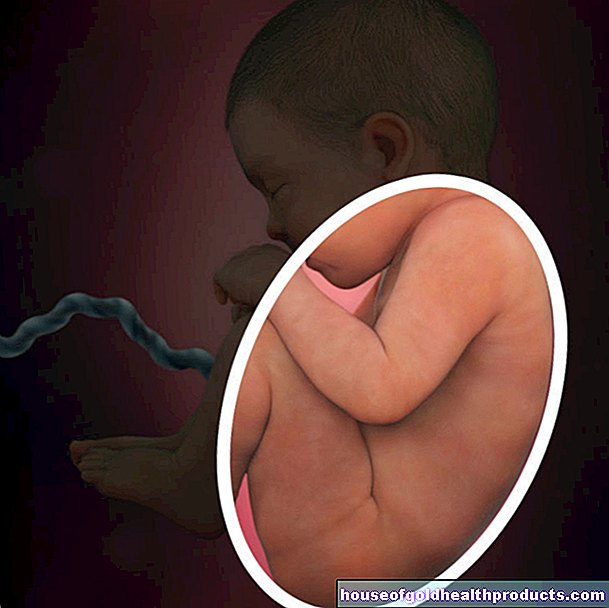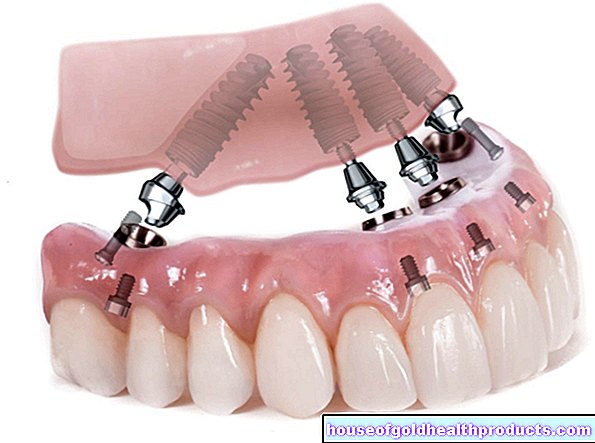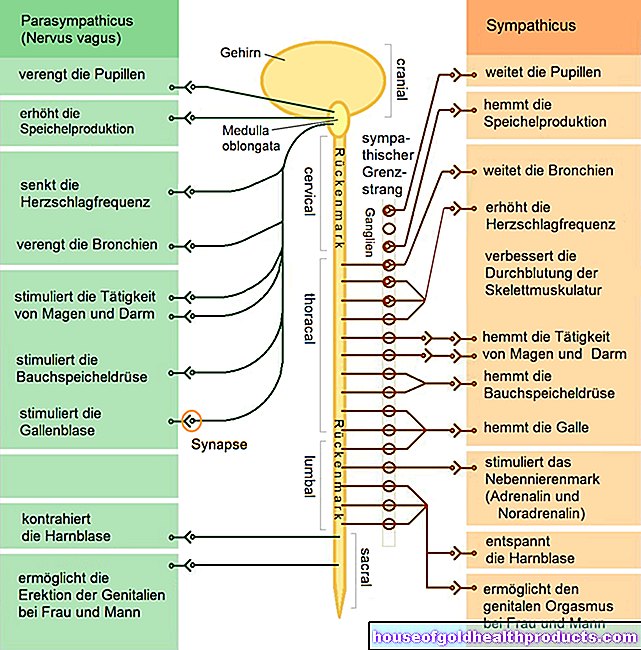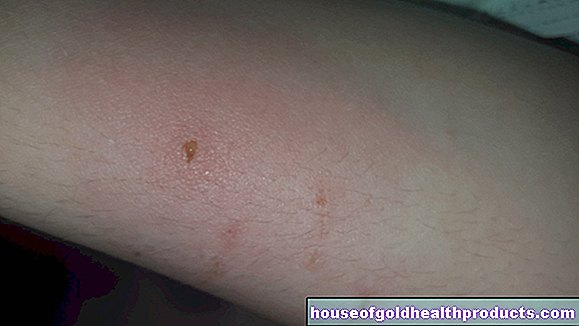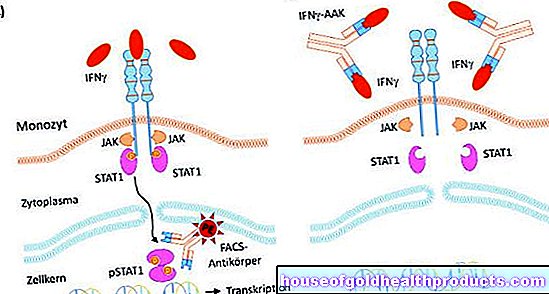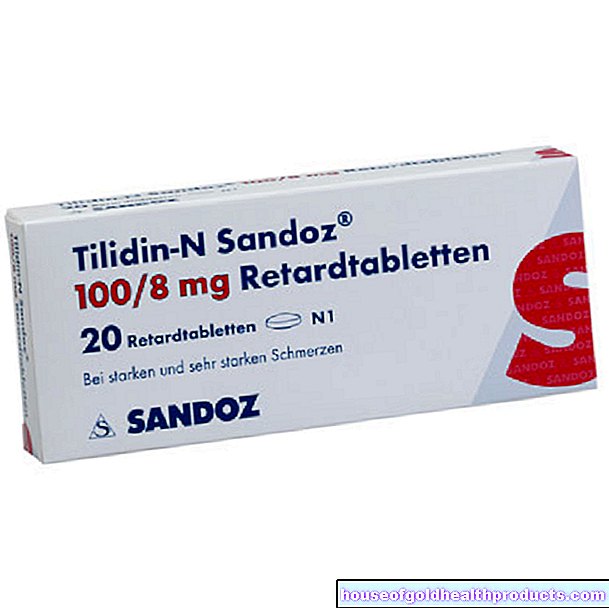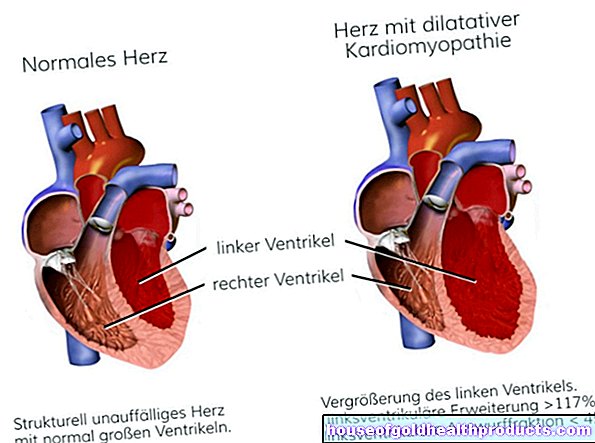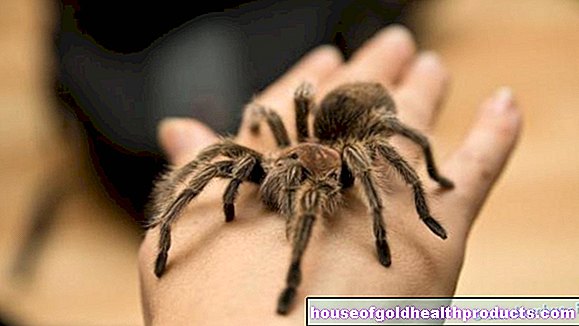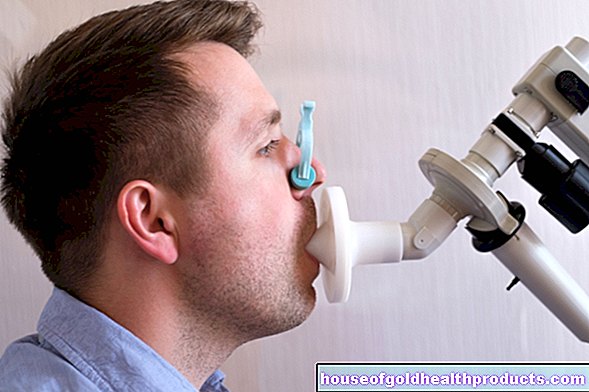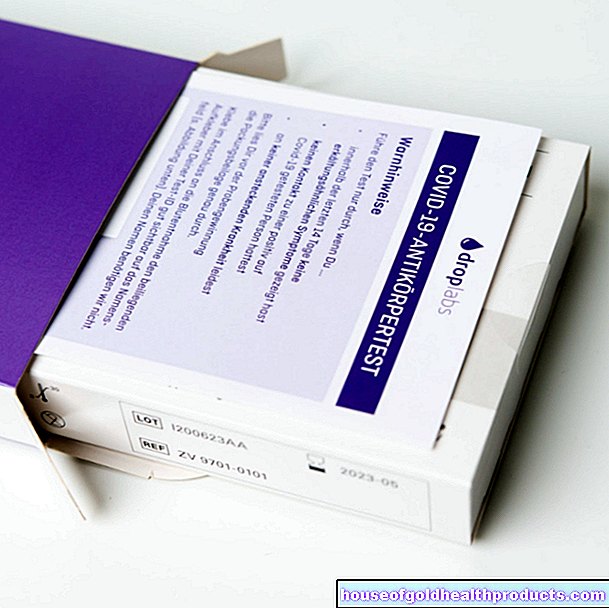Cleft lip and palate
Marian Grosser studied human medicine in Munich. In addition, the doctor, who was interested in many things, dared to make some exciting detours: studying philosophy and art history, working on the radio and, finally, also for a Netdoctor.
More about the experts All content is checked by medical journalists.The cleft lip and palate is one of the most common congenital malformations in humans. In those affected, the upper lip, upper jaw and palate are partially or completely traversed by a gap. The cleft lip and palate is cosmetically disruptive and can hinder breathing and food intake. However, it can be treated well at specialized centers. Read more about cleft lip and palate.
ICD codes for this disease: ICD codes are internationally recognized codes for medical diagnoses. They can be found, for example, in doctor's letters or on certificates of incapacity for work. Q36Q35Q37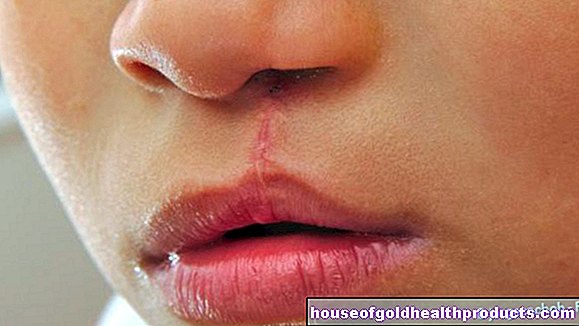
Cleft lip and palate: description
The term “cleft lip and palate” encompasses a group of congenital malformations of the face. The upper lip, the upper jaw and the hard and / or soft palate have a gap. This either runs through all of these facial structures or only parts of them.
In the upper lip, the crevice is reminiscent of the Y-shaped indentation towards the nose on the upper lip of a hare. That is why the cleft lip and palate is colloquially referred to as a harelip. The medical term is cheilognathopalatoschisis.
Many patients find the term harelip to be discriminatory. It is therefore no longer used in a medical context.
Cleft lip and palate: shapes
Strictly speaking, there is a cleft lip and palate only if the cleft is consistently present in the upper lip, upper jaw and palate. In fact, this collective term also includes gap shapes in which only one or two of these structures are affected:
- Cleft lip: Cleft only on the upper lip.
- Cleft lip and jaw: cleft on the upper lip and upper jaw. There is no isolated cleft jaw without cleft lip, just as there is no cleft jaw and palate without cleft lip.
- Cleft palate: Cleft only on the palate.
A cleft palate either runs through the entire palate - i.e. the hard (anterior area of the palate) and the soft palate (posterior area) - or only affects the soft palate (cleft soft palate, cleft palate). There is no single cleft palate, however.
Cleft lip and palate: position
On the upper lip, upper jaw and hard palate, the position of the cleft is not in the middle, but slightly to the right or left of the symmetrical center (paramedian). For example, a cleft lip is always located in the area of the so-called philtrum edge, i.e. at the edge of the vertical groove that runs from the middle of the upper lip to the nose (philtrum). On the upper jaw, the cleft runs in the region of the lateral incisor. There it can reach up to the floor of the nose. In the hard palate, too, there is always a gap to the side of the axis of symmetry, only in the soft palate it is in the middle.
A cleft lip and palate can also be present on both sides. The patients then have two columns, one to the right and one to the left of center. Only in the soft palate are there no bilateral crevices.
Cleft lip and palate: Severity
A cleft lip and palate can be differently pronounced in all sections. A complete cleft lip affects all tissue layers (mucous membrane, muscle, skin) of the upper lip and extends to the nasal entrance. In the case of an incomplete (partial) cleft lip, on the other hand, the lip is not divided up to the nose. Doctors also speak of lip notch here.
A gap in the upper jaw can also vary in terms of width and extent (upwards, i.e. towards the nasal floor). Often it becomes wider in a V-shape towards the top. The adjacent teeth are often misaligned.
Both in the hard and in the soft palate, the cleft can be complete or incomplete and of different widths. In the area of the cleft palate, the oral mucosa, the bony palate plate and the overlying mucous membrane of the nasal cavity are interrupted. The oral and nasal cavities are then not separated from each other. The oral mucosa and the overlying muscle layer are affected along the cleft palate. In the smallest form of a cleft soft palate, only the uvula is split open (uvula bifida).
A special form of the cleft lip and palate is the submucosal cleft palate. The oral mucosa is preserved in the soft palate, but the muscles above it and sometimes the uvula are split. The air-filled nasopharynx then typically shimmers black through the mucous membrane.
Cleft lip and palate: frequency
The cleft lip and palate is a common malformation. In Central Europe, around every 500th child is born with it, with 60 percent boys being slightly more affected than girls. In 40 to 65 percent of all cases there is a continuous cleft lip and palate. Almost a third are pure cleft palates. Isolated cleft lip and cleft lip and jaw together make up about 20 to 25 percent. One-sided columns appear twice as often on the left as on the right. The reason for this is unknown.
Cleft lip and palate: symptoms
A cleft lip and palate can lead to various symptoms and complications, both directly and indirectly. The symptoms also vary depending on the form and severity of the malformation. Above all, cleft formations with palatal involvement are often associated with numerous functional disorders. Possible symptoms of a cleft lip and palate include:
Breathing disorders
In the case of cleft palates, the tongue lacks the palate vault as an abutment. This can cause it to fall back in the newborn and obstruct the airways.Serious breathing problems in babies with a cleft lip and palate are rare.
Difficult food intake
Here, too, the lack of abutment on the palate is the cause. Infants do not suck the nipple, they milk it by massaging it between the tongue and the roof of the mouth. Without a palatal vault, you will not get enough milk. Cleft lip alone, on the other hand, hardly affects food intake.
Impaired language development
Because there is no closure between the oral and nasal cavities in the case of cleft palates, the sound formation is often disturbed. The affected children nibble when speaking (rhinophonia). A cleft lip has little effect on speaking. Only very broad forms that are left untreated cause speech disorders.
Lack of middle ear ventilation
There is a connection between the middle ear and the oral cavity, the Eustachian tube. When swallowing, it opens automatically for a short time and thus ventilates the middle ear or ensures pressure equalization. This mechanism is often disturbed in the case of a cleft palate, and the Eustachian tube then no longer opens properly. This often leads to problems such as accumulation of secretions and inflammation in the middle ear.
Stunted growth
A cleft lip and palate often causes an unbalanced distribution of forces in the face. In the case of a cleft lip or palate, for example, certain muscles are interrupted, which then start incorrectly. This creates a muscular imbalance that can lead to stunted growth.
Many children with a cleft lip and palate therefore also have malformations of the nose, such as a crooked nasal septum or nostrils that are too small. In pronounced cases, this hinders nasal breathing and forces those affected to breathe through the mouth. Jaw growth can also be hindered by a gap. The upper jaw then develops too short compared to the lower jaw (maxillary retrognathia).
Damage and malformations on the teeth
Both the position and the correct number of upper teeth are often affected by a cleft lip and palate. The adjacent teeth are particularly affected. The lateral incisor is often stunted or even missing. In addition, the teeth close to the gap often have little enamel, which makes them more prone to tooth decay.
Dry breathing air
If you have a cleft palate, the air you breathe in is not sufficiently humidified in your nose. Dry air, in turn, promotes tooth decay and infections in the mouth, nose and throat.
Cleft lip and palate: causes and risk factors
Various factors favor the development of a cleft lip and palate - both external (exogenous) and internal (genetic) influences. It is believed that most cleft malformations are caused by external factors. This includes:
- high-energy radiation (such as X-rays or gamma rays)
- certain chemicals and medications such as the anti-epileptic hydantoin
- Viral infections of the mother and child (such as rubella) during pregnancy
- Alcohol abuse and / or smoking during pregnancy
- severe physical and / or emotional stress of the expectant mother
It is not possible to say exactly how big the influence of the individual factors is. It is only considered certain that they promote malformations in the unborn child in general and thus also lead to a cleft lip and palate.
Genetic Influences
A certain proportion of cleft lip and palate is familial, i.e. caused by faulty genetic makeup. However, it is not a single gene that is the trigger; rather, several genes are involved (polygeny). The more relatives have the malformation and the closer the relationship, the greater the likelihood that a child will also develop a cleft lip and palate.
For example, if one of the parents already has a child with a cleft lip and palate, another child is also affected with a probability of four to six percent. If one of the parents also has cleft lip and palate, the risk increases to 17 percent.
Combination with other malformations
A cleft lip and palate often occurs together with other malformations as part of certain syndromes. A syndrome is a clinical picture made up of various typical symptoms. About half of all cleft lip and palate are part of a more complex syndrome. A total of over 400 syndromes are known that can be associated with a cleft lip and palate.
Some of these syndromes are inherited, while the origin of others is unclear. Examples of syndromes with cleft formation are trisomy 13 and Pierre Robin syndrome. In the latter, the affected children have a U-shaped cleft palate and, in addition, a lower jaw that is too small (micrognathia) and a tongue that is often too large shifted into the throat (glossoptosis).
Cleft lip and palate: examinations and diagnosis
A cleft lip and palate is usually immediately apparent when the newborn is examined for the first time. Only a submucosal cleft palate is not always recognized immediately. An ENT doctor or pediatrician may only be aware of them if the child suffers from otitis media unusually often.
Because the affected children often have other malformations, it makes sense to extensively examine them in the first few days of life. For example, the heart, eyes and hearing are checked more closely.
Prenatal diagnostics
You may be able to spot a cleft lip and palate on ultrasound images before birth. Although there are three ultrasound examinations for pregnant women as part of prenatal care in Germany, an exact representation of the face of the unborn child is usually not included.
This facial examination is only included at specialized centers. An experienced doctor can detect a cleft lip and palate with a high probability. Isolated cleft palates are harder to identify. Even in specialized houses, only one in five is discovered.
An ultrasound examination of the fetal face is usually carried out if the family is already aware of cleft malformations. If a cleft lip and palate is diagnosed, the shape of the gap can be determined more precisely with the so-called volume ultrasound. If the malformation is part of a hereditary syndrome, it may be possible to determine this with certain examinations of the genetic material (karyogram, molecular genetic examination).
Cleft lip and palate: treatment
The therapy of a cleft lip and palate is lengthy and complicated. It usually takes place at specialized cleavage centers. Oral and maxillofacial surgeons, orthodontists, ENT specialists and speech therapists work together there and create a suitable therapy plan for each patient.
As a rule, treatment of a cleft lip and palate is started soon after diagnosis. The main steps take place in the children's first years of life. Treatment on adult patients is very rare in Germany.
The primary goal is to close the gap or gaps in all sections (primary treatment). Functional restrictions and subsequent growth disorders are to be avoided. In addition, care is taken to ensure a cosmetically satisfactory result. In addition to the actual operations to close the gap, this usually requires some preparatory measures and possibly surgical interventions in the further course of therapy (secondary treatment).
There is no uniform therapy standard for a cleft lip and palate. The different treatment centers sometimes proceed very differently, especially the timing varies. The basic procedure is usually the same.
Orthodontic pretreatment
First of all, it is important that a baby with a cleft lip and palate can eat without being disturbed. Like other children, it should be suckled on the breast if possible. This is usually not a problem with a purely cleft lip, but children with cleft palates need a special palate plate. This is made from plastic based on a plaster cast and inserted into the baby. So he has an abutment for the tongue.
The palate plate must be regularly adjusted to the growing bone. It not only enables the child to eat, but also controls jaw growth. In this way, it can help narrow the cleft jaw and palate. This in turn makes the operation easier later. If this is not possible with a palate plate alone, there are also other orthodontic methods for this purpose.
ENT medical treatment
Secretions accumulate in the middle ear, particularly in connection with cleft palate. This can lead to hearing loss, which in turn later interferes with language development. A specialized ear, nose and throat doctor therefore examines whether such a collection of secretions is present and whether the hearing is impaired before the first operation.
If so, he will cut a small slit in the eardrum during the first operation so that the secretion can drain off (paracentesis). The slot grows closed again by itself. To prevent secretion from accumulating again in the middle ear after a while, the doctor can also insert a so-called ventilation tube into the slot. This allows the secretion to drain away permanently.
Operative gap closure
The different sections of a continuous cleft lip and palate are usually not closed at once, but at different times. Various surgical techniques are available for the closure.
Cleft lip: One usually begins with the closure of the cleft lip, preferably between the 4th and 6th month of life. Some cleft centers carry out the procedure as early as the 3rd month.
Cleft palate: A cleft in the soft palate should also be closed as early as possible, by the first birthday at the latest - but preferably just a few months after the birth, like the cleft lip, in order to enable middle ear ventilation in good time.
You wait a little longer to close the hard palate in order to avoid possible surgical scars that disrupt the growth of the jaw. On the other hand, it is important that the nasal cavity is separated from the oral cavity so that the child can learn to speak correctly. A crack in the hard palate is therefore closed around the second birthday, at the latest two and a half years after the birth.
Cleft jaw: A narrow cleft jaw can possibly be closed together with the cleft in the hard palate. However, if the cleft in the jaw is too wide, conventional surgical techniques will not ossify the gap, and a cleft osteoplasty will be necessary. To do this, the surgeon takes some bone material from the patient, for example from the hipbone or shin, and inserts it into the gap. After a certain time, it grows together with the edges of the gap and thus closes the gap.
A jaw gap closure by means of osteoplasty is usually carried out between the ages of 7 and 11, preferably before the canine erupts. Because the canine can then be orthodontically moved into the gap where it now has a bony abutment.
Subsequent operations and accompanying treatment
Even if the surgical closure of a cleft lip and palate goes according to plan, functional and aesthetic problems often remain. Sometimes they are also the result of surgical scars.
To correct these defects, further interventions may be necessary, such as language-improving operations, nose corrections or the closure of remaining holes in the palate. You should be done as soon as possible. For nose corrections, however, one usually waits for the end of the nose to grow, otherwise malformations can arise again.
In addition to the surgical interventions, the patients are regularly examined orthodontically and treated if necessary. Above all, when the milk teeth erupt and later the permanent teeth, you have to watch out for misalignments.
Speech therapy support for the children is also important. This should start in the first year of life and, among other things, check the development of the lip, tongue and palate muscles. In the 2nd and 3rd year of life, the speech therapist monitors the sound formation and intervenes therapeutically if necessary.
Cleft lip and palate: disease course and prognosis
Cleft lip and palate are complicated malformations that, if left untreated, lead to numerous complications. It takes a specialized treatment team and a lot of time to remedy all aesthetic and functional limitations. The main operations for a cleft lip and palate usually take place within the first three years of life, but subsequent corrective surgical interventions can sometimes be necessary into young adulthood.
Check-ups are also carried out at regular intervals in the non-operation phases. So the patients have to endure a lot. That can be mentally stressful for them. Therefore, the children and their parents can receive psychotherapeutic support as part of the treatment. There are also self-help groups and parenting initiatives that offer support.
But the long procedure is worth it, because at the end of the therapy there is usually a good result. The patients live symptom-free and of the former cleft lip and palate you can hardly see more than a small scar on the upper lip.
Tags: elderly care magazine unfulfilled wish to have children




